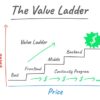Email Marketing
Simple Steps To Create An Effective Business Proposal
How to Write Effective Business Proposals that Win More Sales
Want to create business proposals that help you close more deals? This guide will take you through each step!
Contents:
- What is a Business Proposal?
- Step #1: Research Your Customer
- Step #2: Define Your Value Clearly
- Step #3: Gather Strong Social Proof
- Step #4: Prepare Thoroughly Before Submission
- Step #5: Research Each Sales Prospect
- Step #6: Outline Your Proposal
- Step #7: Write Persuasive Copy
- Step #8: Design a Professional Proposal
- Step #9: Submit the Proposal
- Step #10: Follow Up!
What is a Business Proposal?
A business proposal is a document that:
- Explains who you are.
- Shows how you can help solve a specific problem.
- Provides clear pricing and a breakdown of costs.
Unlike marketing pamphlets, proposals are tailored sales assets designed to address a potential client’s specific challenges. The more personalized the proposal, the better your chances of success.
Step #1: Research Your Customer
A successful business proposal starts with understanding your customer. Define your ideal customer profile (industry, size, challenges), identify the key decision-makers, and understand the stakeholders involved. This research allows you to craft copy that speaks directly to the customer’s needs.
Step #2: Define Your Value Clearly
Get clear on how your product or service will benefit the company, the decision-makers, and the stakeholders. Make sure that your proposal highlights the value your solution brings to the company and subtly hints at the personal benefits for those involved.
Step #3: Gather Strong Social Proof
Show that others trust you by including:
- Customer Testimonials: Use real customer feedback with names, titles, and photos.
- Case Studies: Explain how you helped similar customers achieve results.
- Endorsements: Seek endorsements from respected figures in your industry.
Step #4: Prepare Thoroughly Before Submission
Much like a marriage proposal, it’s not just the proposal itself that matters—it’s everything leading up to it. Build a positive reputation, maintain a professional demeanor, and create a good impression from your first interaction onward.
Step #5: Research Each Sales Prospect
Learn about each potential client, including their challenges, recent company developments, and any key players involved. This information will help you determine if they’re a good fit and prepare a more targeted proposal.
Step #6: Outline Your Proposal
Organize your proposal with the following structure:
- Cover Page: Introduce the proposal.
- Table of Contents: (for digital proposals, make it clickable).
- Executive Summary: Briefly state the problem, your solution, and why you’re the right choice.
- Problem Statement: Clearly outline the issue.
- Solution Statement: Explain how you’ll solve the problem.
- Methodology: Describe your approach step-by-step.
- Timeline: Show deadlines and deliverables.
- Pricing: Break down the costs.
- Terms & Conditions: Outline your terms.
- Case Studies: Provide examples of your work.
Each of these sections should be on its own page, creating a minimum 10-page document.
Step #7: Write Persuasive Copy
Focus on the client, not yourself. Show them how they’ll benefit from working with you, and include social proof like testimonials and case studies to make your proposal more compelling. End with a clear call-to-action (like scheduling a follow-up call).
Step #8: Design a Professional Proposal
Presentation matters. Use business proposal templates from Adobe, Canva, or Visme, or hire a designer for a custom look on Fiverr or Upwork.
Step #9: Submit the Proposal
Once it’s ready, send your proposal with a polite message. Add a note for follow-up questions and include a link to your calendar if they’d like to schedule a call.
Step #10: Follow Up!
If you don’t hear back, follow up regularly. This respectful persistence keeps the conversation open and lets them know you’re available for questions.
Want to Learn Copywriting that Converts? If you want to master the skill of writing persuasive copy, check out Jim Edwards’ book Copywriting Secrets. It’s available on Amazon or directly from Jim for free (just pay shipping).
Good luck, and happy proposal writing!
>>>Join The One Funnel Away Challenge<<<






























